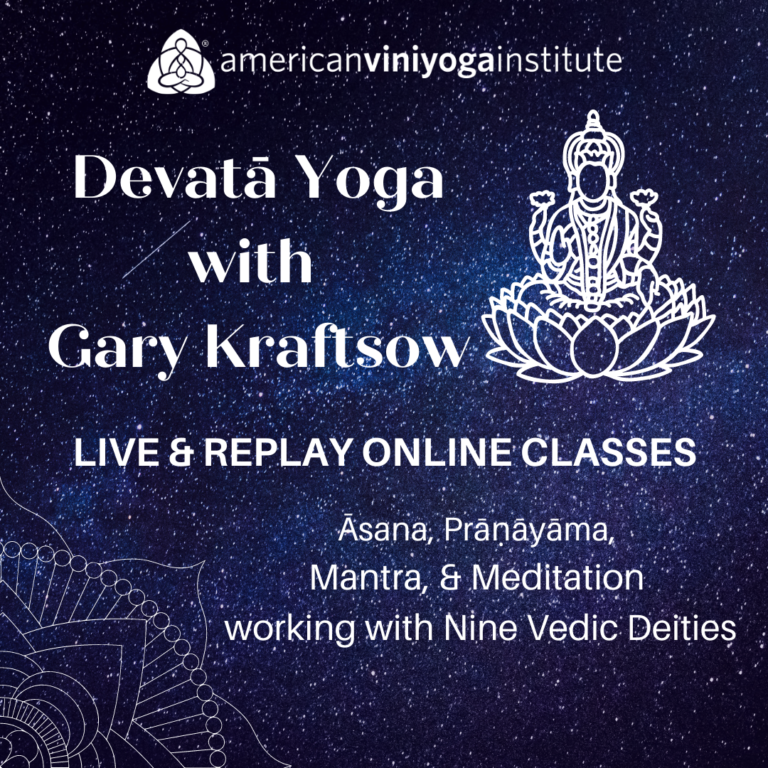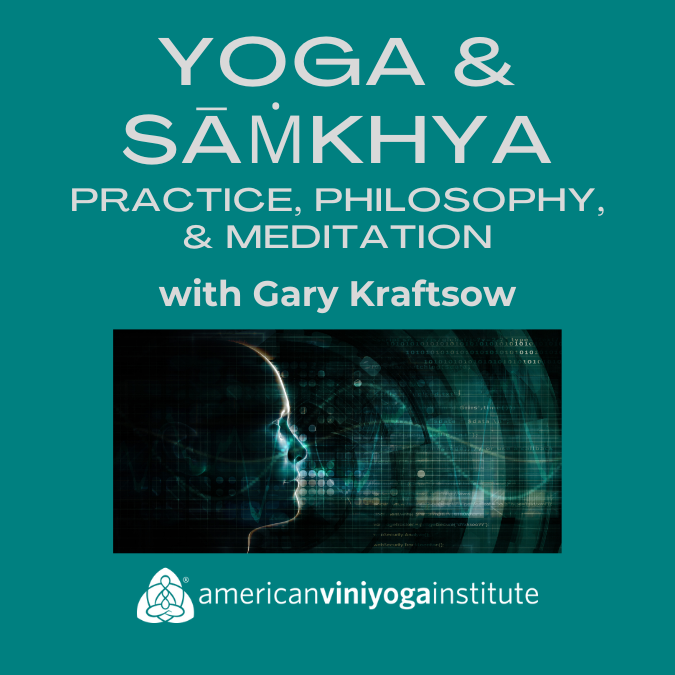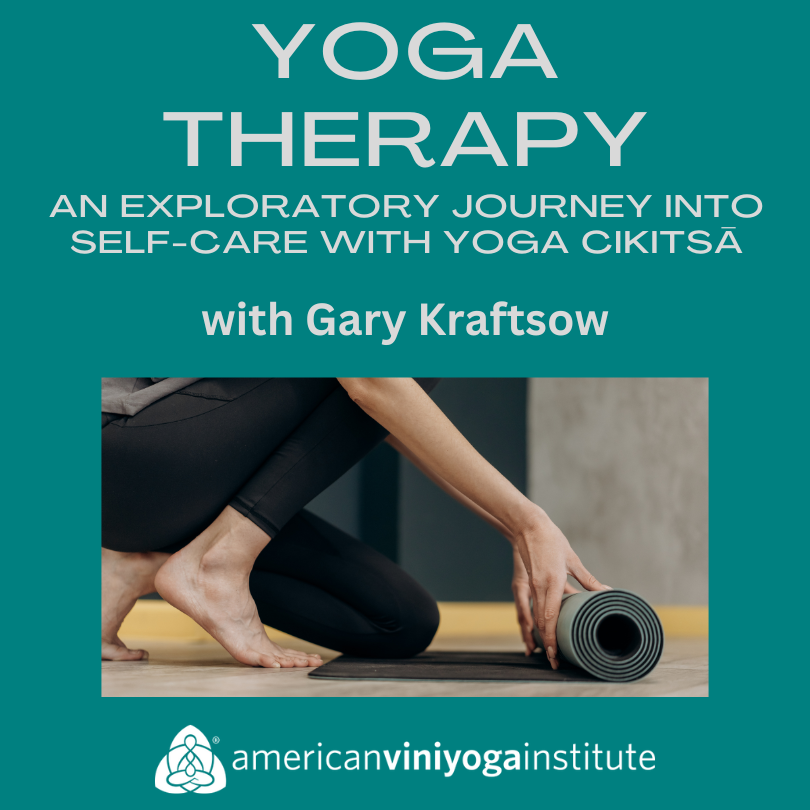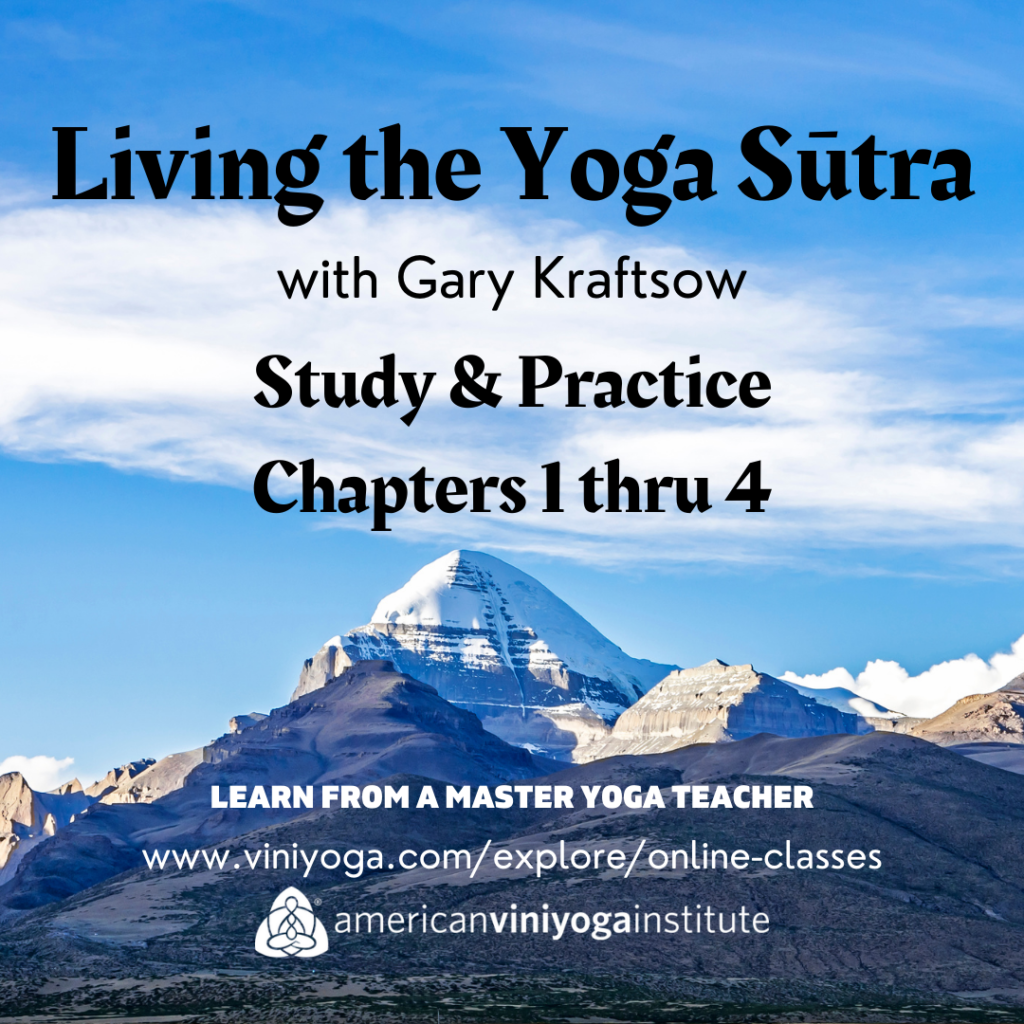Experience a Viniyoga class with
Gary Kraftsow right
in your own home.
The AVI Online Digital Library:
Over 200 recorded classes with
Gary Kraftsow & faculty.
Classes are hosted by union.fit.
The AVI Online Digital Library
with advanced Viniyoga classes led by
Master teacher, Gary Kraftsow, Founder and Director of the American Viniyoga Institute
and beginner/intermediate Viniyoga classes (Discover Viniyoga)
led by experienced Viniyoga teachers.
Rakṣana Krama: Āsana and Prāṇāyāma for Lifelong Health and Well-being
Conceived by Nāthamuni as one of the most important orientations in personal practice that utilizes the tools of āsana and prāṇāyāma, rakṣana krama is designed to protect our health as we move through time and space.
In rakṣana krama with a structural focus, āsana-s are adapted in order to deepen our understanding of how our structure is changing over time and, with that understanding, work to: maintain or regain proper alignment, maintain or improve joint stability and range of motion, strengthen weak muscles, release chronic muscular contraction, maintain or restore symmetry, increase circulation, and identify and transform dysfunction neuro-muscular movement patterns.
Learn the unique Viniyoga methods of adapting and sequencing breath-centric āsana. In this series of classes, experience well-designed sequences through which we will systematically explore and work with each of the key areas of our anatomy.
In rakṣana krama with a physiological focus, breath-centric āsana and prāṇāyāma are adapted in order to deepen our understanding of how our physiological systems are impacted by the pressures and stresses of daily life in order to support or improve their function. Learn the unique Viniyoga methods of breath adaptation in āsana to prepare for specific prāṇāyāma ratios and techniques. We will use these tools to systematically explore and work with each of our major physiological systems.
** This series includes demonstrations which can be very helpful for those new to yoga and Viniyoga in particular.

Kriyā-s: Prāṇāyāma and Associated Practices
Kriyā-s are cleansing exercises usually practiced in association with prāṇāyāma.
Kriyā-s are traditionally practiced after āsana, before prāṇāyāma. In this series of practices, we will work with these powerful techniques, learning how to use them correctly in order to experience their benefits.
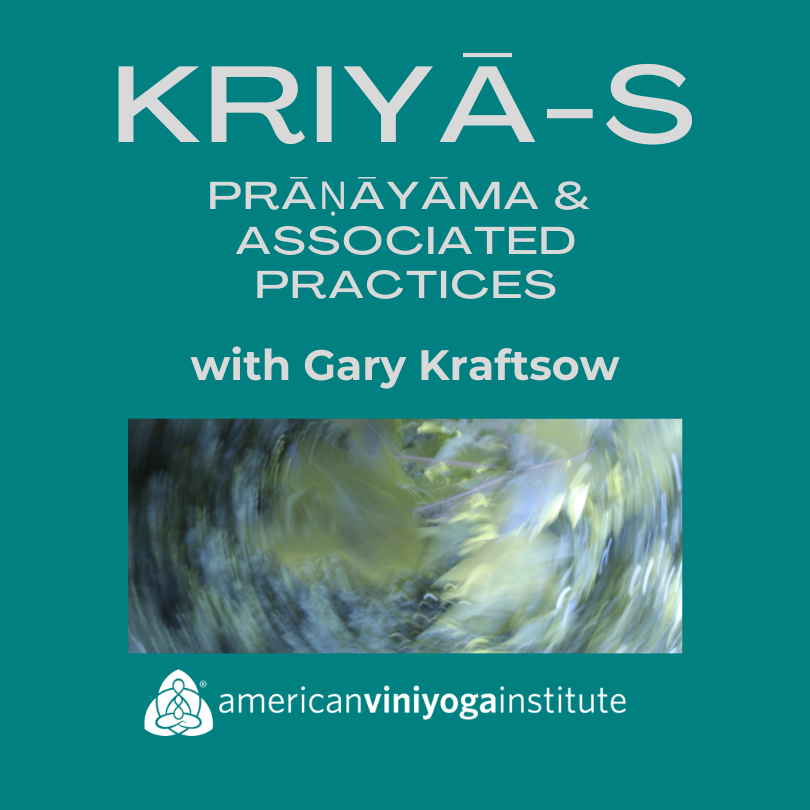
Bandha-s: Prāṇāyāma and Associated Practices
Bandha-s – which can be translated as locks– are practiced in association with prāṇāyāma.
They are powerful tools developed in the context of Tantric Yoga, designed to accelerate the action of transformation in the human vessel. In this series, we work with these powerful and often misunderstood tools, learning how to use them correctly in order to experience their benefits.
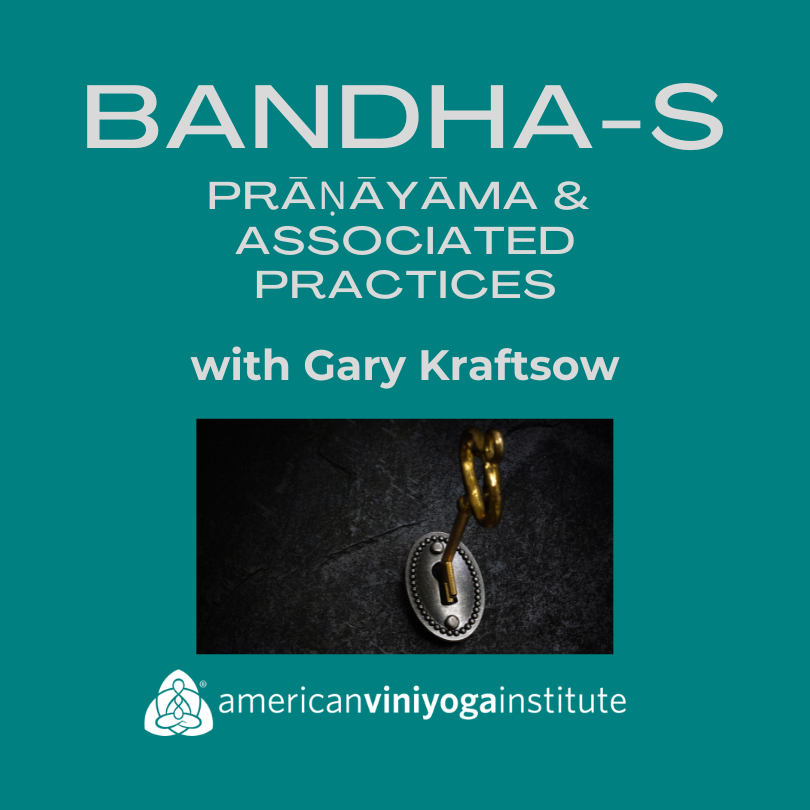
Yoga & Sāṁkhya: Practice, Philosophy, & Meditation
There is an inseparable relationship between Sāṁkhya and Yoga.
Sāṁkhya presents a philosophical understanding of the true nature of all existence, enumerates and explains the constituent parts of the created, ever-changing manifest world, and differentiates them from the eternal, unchanging Self.
Yoga, rooted in the philosophical principles of Sāṁkhya, offers the practical means by which the true nature of the manifest world, and of the True Nature of Self, can be realized. That realization is the means to achieve freedom from suffering and to attain final liberation, which are the goals of both Sāṁkhya and Yoga.
The Saṁkhyā Kārikā is an important text, presenting the foundation principles upon which our practice of Yoga and Āyurveda are built.
Each class includes:
– an āsana and prāṇāyāma practice to prepare the body and mind
– philosophical teachings of Yoga that derived from the tradition of Sāṁkhya
– a meditation that emerges from those teachings
Yoga Therapy for Structural Issues
A n Exploratory Journey into Self-Care with Yoga Cikitsā. Yoga Therapy uses the tools of āsana, prāṇāyāma, mantra japa, and meditation to promote balance, integration, and healing.
Your journey will cover a broad variety of structural conditions that are commonly experienced. As these are group classes rather than individual therapeutic sessions, the practices are generalized and illustrate the kinds of general tools that will promote healing for those who suffer from these conditions.
Explore classes for:
Low Back & Sacrum
Upper Back
Hips
Knees
Ankles & Feet
Elbows, Wrists, Hands & Fingers
Shoulder
Neck & Jaw
Scoliosis
Yoga for Wellness
Heal with the Timeless Teachings of Viniyoga: simple but powerful Viniyoga āsana & prāṇāyāma for health & well-being.
Join Master teacher, Gary Kraftsow, for fundamental yoga classes in the Viniyoga tradition. Reap the benefit of his 50 years of experience in the Viniyoga tradition and learn simple āsana and prāṇāyāma to maintain your health and well-being at any stage of life.
Strengthening Major Muscle Groups
Building Breath Threshold
Working with Neck & Shoulders, Bṛṁhaṇa Prāṇāyāma
Deep Twisting & Anuloma Ujjāyī with Samāna Ratio
Āsana for Samāna Vāyu w/ Samāna Prāṇāyāma & Uḍḍīyana Bandha
Āsana for Vyāna Vāyu w/ Pratiloma Ujjāyī Prāṇāyāma
Āsana for Prāṇa Vāyu w/ Anuloma & Viloma Krama Prāṇāyāma
Apāna Vāyu; EX Krama with Chant
Udāna Vāyu; Śītalī or Sītkārī Prāṇāyāma; Sāvitrī Gāyatrī

Living the Yoga Sutras
Patañjali is said to be the incarnation of Ananta, also known as the Nāgarāja. Tradition explains that Patañjali incarnated in response to the prayers of his devotees to be freed from suffering. He is said to have brought forth three great texts that contained essential teachings for the purification of the:
- Body – Caraka Saṃhitā
- Speech – Mahābhāṣya
- Mind – Yoga Sūtra-s
In the Yoga Sūtra, Patañjali organized his teachings about Yoga into four chapters. Tradition suggests that each chapter was prepared for a different disciple, each at a different stage in their personal evolution. Within each chapter, there are groups of linked Sūtra-s—or Sūtra clusters—through which Patañjali transmits the core teachings that are contained in each chapter.
In this ongoing series, we will explore the core teachings presented in all four chapters progressively by focusing on key Sūtra-s within each Sūtra cluster. Each class will include āsana and prāṇāyāma to support meditation on one of these important Sūtra. We will follow the order presented by Patañjali,beginning with Y.S. Chapter 1, and continuing through Chapters 2, 3, and 4.
Led by Master teacher, Gary Kraftsow, Founder and Director of the American Viniyoga Institute.
Mentorship Saṅgha
Patañjali is said to be the incarnation of Ananta, also known as the Nāgarāja. Tradition explains that Patañjali incarnated in response to the prayers of his devotees to be freed from suffering. He is said to have brought forth three great texts that contained essential teachings for the purification of the body, speech and mind
Meeting on the fourth Thursday of the month at 4pmPT (schedule & holiday dependent).
Exclusive to Ananta Pass holders.
Led by Master teacher, Gary Kraftsow, Founder and Director of the American Viniyoga Institute.
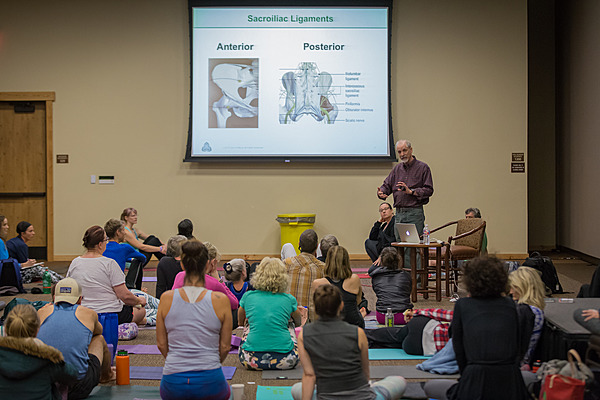
Antya Krama: Resolving Karma
Explore the use of āsana and prāṇāyāma to support a meditation practice oriented towards resolving karma-s in relation to oneself, others, and the world around us. During the seven classes of this series, we will work with the methods of Bhūta Śuddhi and Cakra Sādhana. We will systematically examine our svabhava (personality) through:
- svādhyāya on each cakra to surface unresolved issues, projections, attachments, aversions, and fears; and
- pratipakṣa bhāvanam to reframe our understanding about what is truly meaningful and important in the face of impermanence.
Watch this clip on Gary’s YouTube Channel where he discusses the meaning and intention of Antya Krama.
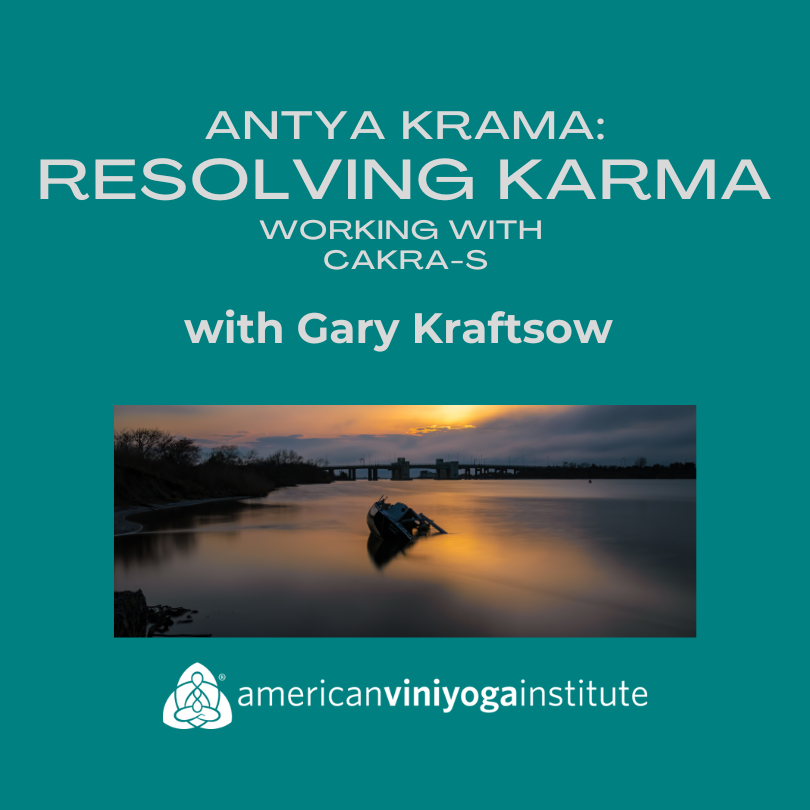
Mahāvākya – A Path to Freedom
The Mahāvākya–s are short statements, usually taken from the Upaniṣad-s, which distill and reveal profound Truths about the Divine (Brahma), the Self (Ātman), and the Universe.
The Mahāvākya–s offer a path to find answers to life’s key questions, and ultimately Self-Realization (Ātmavidyā) and/or “God-Realization” (Brahmavidyā). While the Devatā Yoga series focused on the Symbolic Language of the Gāyatrī Mantra–s for each Deity, this series will focus on the Philosophical Language of the Mahāvākya–s.
Each class will offer a truly integrated practice using āsana, prānāyāma, chanting, and meditation with a focus on one of the great Mahāvākya–s, using a different one for each session.
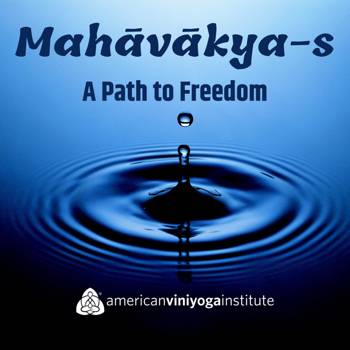
Prāṇāyāma & Meditation
Langhana: Manage your stress and promote deep relaxation.
Bṛṁhaṇa: Build courage and strengthen your immune system.
A progressive series of practices which will use a varying combination of breath and meditation techniques.
All practices can be done seated on the floor or on a chair.
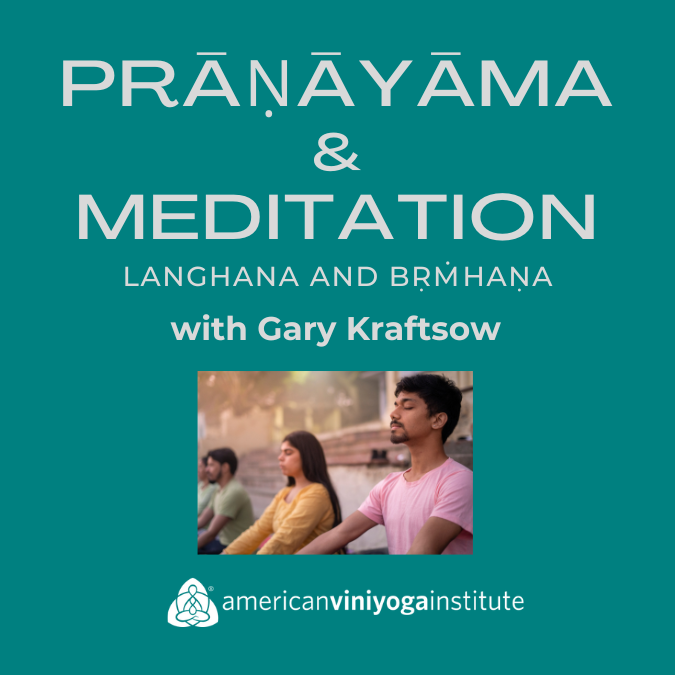
The River of Life: The Inner Practices of Tantric Yoga
Resolve current issues and set a new direction for your future. A progressive series of practices which will use a varying combination of breath, Mantra, self-reflective meditation, Cakra Sādhana , and Deity Yoga.
All practices can be done seated on the floor or on a chair.
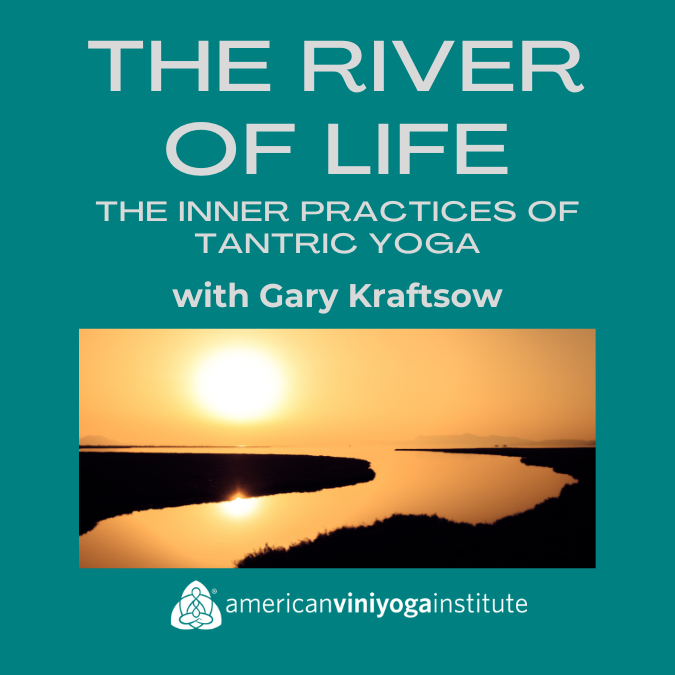
Working with the Nāḍī-s
Bṛṁhaṇa & Samāna Prāṇāyāma
Stimulate and activate your system using specialized nostril breathing techniques combined with either Bṛṁhaṇa or Samāna breathing ratios. A progressive series of practices designed to build courage, stimulate the immune system, balance the emotions, clarify the mind, and activate your creativity.
Langhana & Samāna Prāṇāyāma
Balance your autonomic nervous system and promote deep relaxation using specialized nostril breathing techniques combined with either Langhana or Samāna breathing ratios. A progressive series of practices designed to manage stress, balance the emotions, clarify the mind, and promote deep relaxation.
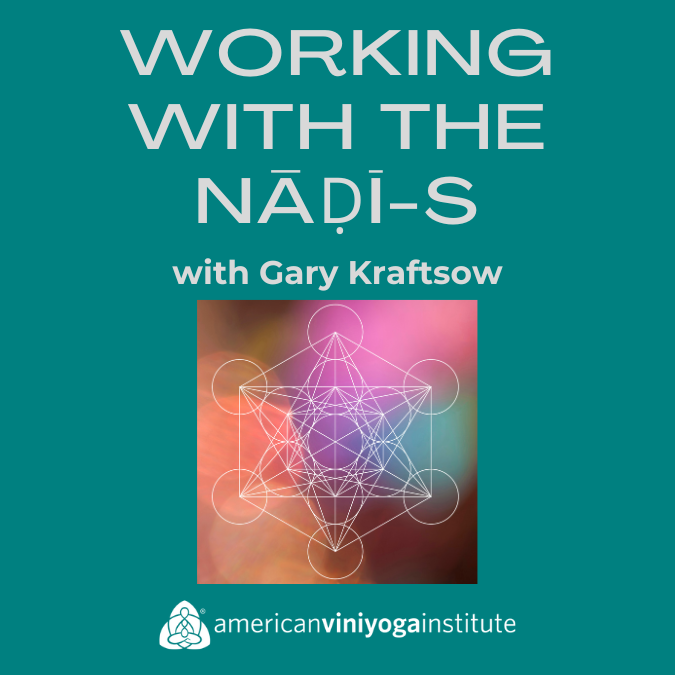
Tantric Laya Yoga Meditations on the Cakra-s
The Ancients evolved a complex symbol system and associated methods of practice to help us understand and transform ourselves at the level of thought, feeling, impulse, and ultimately conditioning. In this progressive series, we will use these symbols and methods in meditation to explore and transform our dysfunction and actualize our potential.
Meditations on the seven cakra-s using Bhūta Śuddhi & Cakra Sādhana to help surface and transform your habit patterns.
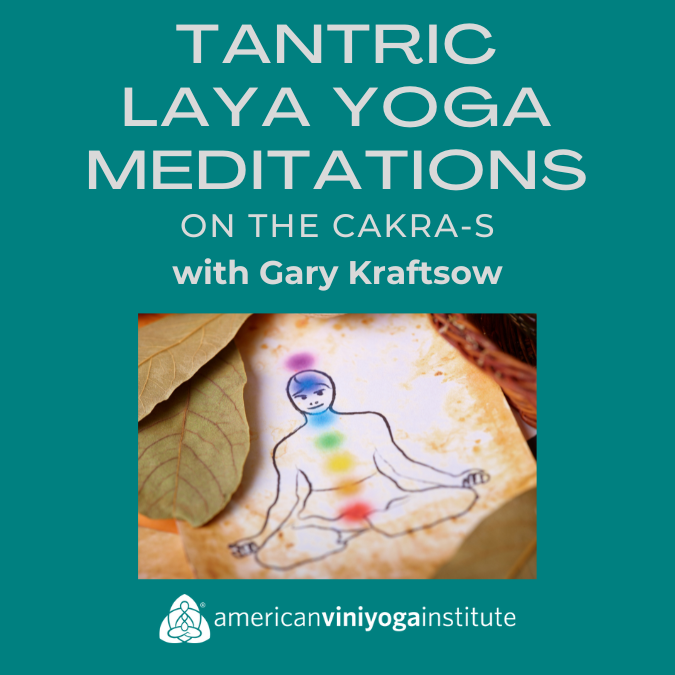
Hṛdaya-Granthi Bhedanam: The Knots of the Heart
We live in perpetual state of identification with and attachment to changing internal conditions and external circumstances, not seeing our true nature. The Ancients said that the cause of this perpetual cycle (saṁsāra) is the bondage of – Avidyā (ignorance), Kāma (desire) and Karma (action) – resulting in the tension and suffering of distorted self-perception, unfulfilled desires, and incessant activity.
The Ancients said that this three-fold bondage forms the framework of our personality, and called it, collectively, the Hṛdaya Granthi: the “knot of the heart”.
Discover of the “knots of the heart-mind” (hṛdaya-granti) in relation to the bondage of desire, action, and ignorance as they manifest through the cakra-s and influence our feelings, thoughts and behavior.
In this series, we will work with the “Knots of the Heart-Mind” as they manifest through the cakra-s. Using specific meditation technique, learn to surface and deactivate the ‘land mines’ that block us from realizing our full potential.
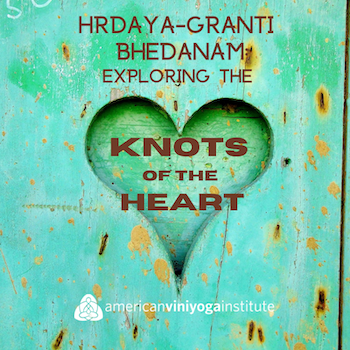
Devatā Yoga
The Ancient practice of Devatā Yoga uses the symbolism of the Vedic Gods and Goddesses as a means of helping practitioners realize and actualize what the tradition calls our ‘innate Divine potential.’
There are three practices for each Deity.
In the Bṛṁhaṇa class, learn to chant the a specific Gāyatrī Mantra and use it in Āsana & Prāṇāyāma.
In the Langhana class, continue to learn the Gāyatrī Mantra, using a different combination of Āsana & Prāṇāyāma.
In the Samāna meditation class, learn about the particular Deity that is the personification of the Gāyatrī Mantra, as well as specific techniques to support your meditative experience on/with that Deity.
Deities covred:
(Gaṇeśa) Gaṇapati, Brahma, Sarasvatī , Viṣṇu, Lakṣmī , Rudra (Śiva) , Durgā, Dattātreya, Sāvitrī
